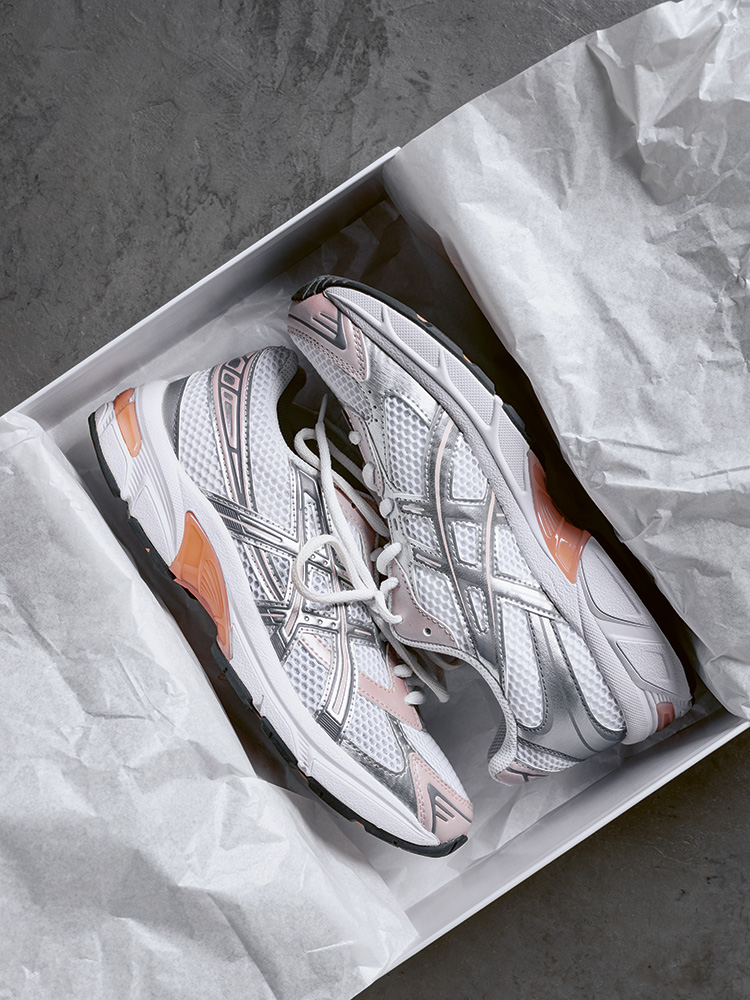Body rebooting.
Text: Angelika Jacobs
Resolving to do more exercise is a good thing. Then we get stressed, bad weather puts us off or our workout gear needs a wash. A service offered by the Department of Sport, Exercise and Health aims to help people act on their good intentions. Time to try it for myself.
A modern meeting room with white tables and minimalist chairs. Through the window, I spy swimmers ploughing up and down in St. Jakob’s outdoor pool. Training in the fresh air on an early summer evening. It would be nice to build something like that into my after-work routine, I think. Immediately, my inner realist pipes up: “You don’t have the time.” She’s right, the spoilsport. What a pity.
As a parent working part-time with a large workload, I’m one of those people who struggle to get enough exercise. That’s part of the reason why I find myself here, in this room at the Department of Sport, Exercise and Health (DSBG), gazing out at the swimming pool. In our UNI NOVA editorial meeting, I was the number one candidate to try out the new Zentrum für Bewegungsberatung, a center at the University of Basel that provides advice on exercise.
Instructor Patrick Carigiet welcomes the course participants, all female this time. We take it in turns to introduce ourselves. Then, Carigiet explains the principle behind the free advice service. As part of a research project, a basic rehabilitation concept is now being trialed in general sports advice settings. “Motivation-Volition – Lifestyle-Integrated Sports Activity” (or MoVo-Lisa for short) will hopefully help us all to achieve our goal of moving more. In the coming months, we’ll complete a survey to find out whether it has worked for us personally.
Turning intentions into actions
“Often motivation isn’t the real problem, but rather incorporating sport into your everyday life long-term,” says Carigiet, a DSBG research associate and professional coach. However, “moving more” is still too vague a goal: Carigiet gets us to explain more precisely why we want to exercise more. Quite a few things come up, including stress relief, reducing or preventing back and joint pain, getting fitter, feeling better in ourselves and controlling our weight. Next, we collect ideas for types of exercise that might suit our goals.
Before our second session in a week’s time, we’re asked to reduce our list of possible sports to what we consider to be realistic. My main criterium is exercise that doesn’t require lots of time or equipment. My list includes yoga, jogging and possibly Zumba at the nearby studio. The second session, on another warm afternoon, is a one-on-one consultation with Carigiet. He commends my list, but warns that I’m taking on too much. He finds that people who overload their training plans quickly give up.
Exercise buddies and rewards
A week later, the whole group meets one last time to flesh out our plans. We talk about the things that might be holding us back. Once we have given our lists a personal reality check, including for physical limitations like joint pain, there’s just one more obstacle to overcome: our own self-sabotage. After a long day, relaxing seems far more appealing than exercise.
The group collects ideas to deal with this, too: Arrange to do sport with a friend, have your workout gear ready, or create a reward system. You could listen to your favorite podcast only when exercising or create a type of loyalty card: after ten units of sport, you can treat yourself to something.
At the end of the session, we all return home with a clear plan of the sport we want to incorporate into our weekly routines and when. Unfortunately, my plan isn’t particularly precise, because my daily life requires too much flexibility. As a start, I’ve decided to do 20-minute yoga sessions at home using videos or an app so that I can do yoga at any time and in any weather. As a bonus, I can cycle to work and go for a run at the weekend when the weather allows.
With around 40 participants so far, it’s too early to draw any conclusions from the data, says Markus Gerber, Head of Psychosocial Health and Physical Activity, who is responsible for the accompanying study. “However, the surveys are showing a very high rate of satisfaction among participants,” he tells me. The next step is to promote the service more widely in various settings to attract more participants. A sufficiently large number of people is required before the statistics can be analyzed to determine whether the service is changing people’s lives for good.
In the meantime, my exercise plan has fallen apart somewhat. In the weeks and months following the course, I’ve been repeatedly thrown off course by colds, bad weather and a broken bicycle. But now I have a box of tricks to help me restart my training — over and over again, if necessary. Let’s also not underestimate the power of support from those around you. Thanks to my daughter, my exercise loyalty card is now brightly decorated in all sorts of colors.
Patrick Carigiet is a research associate in the Department of Sport, Exercise and Health (DSBG) and works as a coach at the Zentrum für Bewegungsberatung.
Markus Gerber is Professor of Psychosocial Health and Physical Activity. He studies the effects of sport and movement on mental health. He has also been head of the DSBG since early 2023.
More articles in this issue of UNI NOVA (November 2025).

